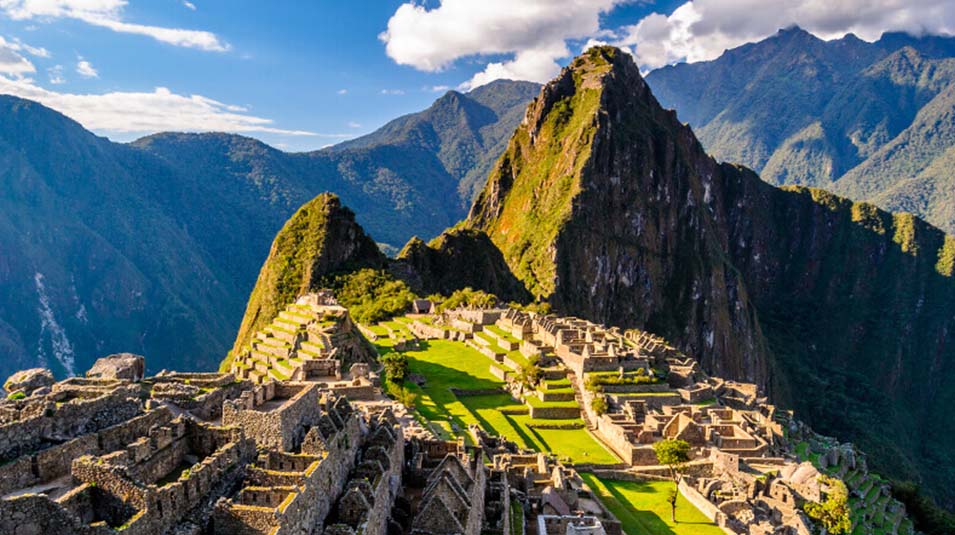Machu Picchu, Peru – Travel Tips
Category
Categories
Popular Articles

**Overview of the Destination**
Machu Picchu, often referred to as the “Lost City of the Incas,” is a UNESCO World Heritage Site and one of the Seven Wonders of the World. This ancient city is perched high up in the Andean mountainside and is famous for its spectacular ruins, intriguing history, and breathtaking landscape. A symbol of the ingenuity and engineering prowess of the Incan civilization, it attracts travelers from around the globe.
**Best Time to Visit**
The best time to visit Machu Picchu depends on your preference for crowds and weather. The peak season, which brings the most sunshine and the highest number of tourists, is during the dry season from May to August. If you prefer lesser crowds and wouldn’t mind a bit of rain, the off-season from November to March might be a better fit. There are no major festivals held at Machu Picchu itself, but Cusco’s biggest festival—Inti Raymi, a reenactment of the Inca’s winter solstice celebrating the Sun God—takes place annually on June 24.
**Climate & What to Pack**
Peru falls in the tropics, and Machu Picchu has a subtropical highland climate. Days can be warm, while nights tend to be cooler. Rain is a possibility all year round, so it’s a good idea to pack a waterproof jacket. Hiking shoes, hats, sunglasses, sunblock, and insect repellent are must-haves for exploring the ruins. Quick-dry clothing and a day pack to carry water, food, and other essentials are also recommended. Pack layers as temperatures can fluctuate.
**Getting There**
The nearest major airport to Machu Picchu is Alejandro Velasco Astete International Airport (CUZ) in Cusco. From the airport, you can take a bus to Ollantaytambo followed by a train to Aguas Calientes, the town nearest to Machu Picchu. From Aguas Calientes, frequent buses run up the hill to the site itself. Tourists traveling to Peru need a valid passport but most will not require a visa for visits less than 90 days.
**Getting Around Locally**
Within Aguas Calientes, the town is small enough to navigate by foot. To get to Machu Picchu, you can either hike the Inca Trail or take a bus. It’s not recommended to rent a car as the terrain is challenging and it’s far easier and safer to rely on public transportation or guided tours.
**Safety Tips**
Peru is generally a safe country, but it’s prudent to exercise common sense and keep an eye on your belongings at all times. At Machu Picchu itself, pay attention to the marked paths and follow all safety signage to avoid injuries or damaging the ancient ruins. Solo travelers should feel comfortable, but as with any travel, it’s recommended to share your plans and schedule with someone back home.
**Top Things to Do & See**
Machu Picchu itself is the star attraction, but don’t miss the Sun Gate for stunning sunrise views, the Royal Tomb, Temple of the Sun, and the agricultural terraces. For the adventurous souls, a climb up the steep Huayna Picchu mountain is rewarding, offering an unparalleled panorama of the ancient city.
**Where to Stay**
There are a range of accommodations in Aguas Calientes. For luxury seekers, the Belmond Sanctuary Lodge offers unrivaled proximity to the ruins. Mid-range travelers can consider the Tierra Viva Machu Picchu hotel, while budget travelers might like the friendly atmosphere of Supertramp Hostel.
**Food & Local Cuisine**
Local Peruvian cuisine includes dishes like ceviche (raw fish marinated in citrus juice), lomo saltado (stir-fried beef), and cuy (guinea pig). For vegetarians, a popular option is quinoa con verduras (quinoa with vegetables). You can find these dishes at numerous sit-down restaurants in Aguas Calientes or in Cusco.
**Cultural & Practical Tips**
The local currency is the Peruvian sol. Spanish is the official language, but English is widely spoken in tourist areas. Tipping around 10% is common in restaurants, but not required. The voltage supply is 220V and plug type is A/B/C. Wi-Fi is available in most hotels, but might be less reliable on the site itself.
**Sustainable or Responsible Travel Tips**
Ensure to leave Machu Picchu as you found it, by taking any trash with you and not removing any stones or artifacts. Stick to the paths and don’t climb on the structures to help maintain the site for future generations.
**Personal Travel Insight**
Lastly, my personal tip for visiting Machu Picchu is to start the day early, so that you can appreciate the sunrise and enjoy the stunning scenery before the site gets too crowded. And remember, it’s all about the journey, not just the destination, so take time to enjoy the sights and sounds of Peru on your way to Machu Picchu.










